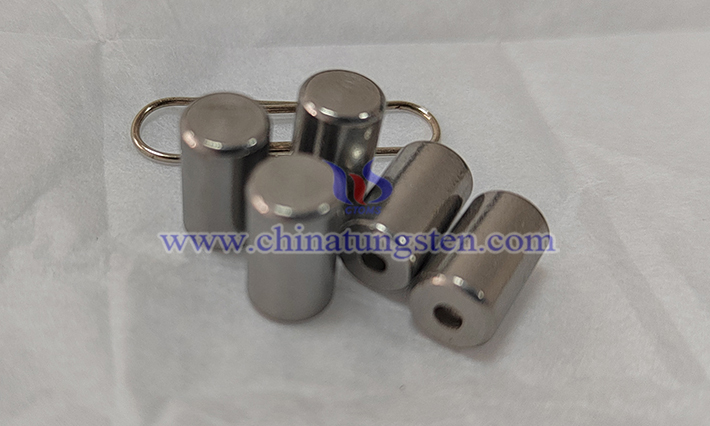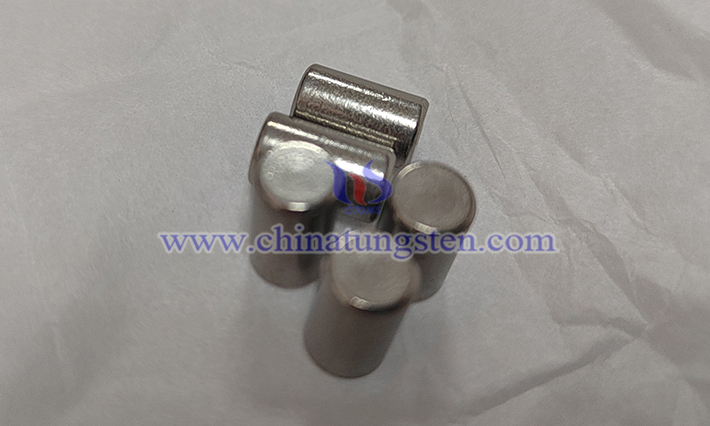Factors Affecting the High Temperature Performance of Barium Tungsten Electrodes
- Details
- Category: Tungsten Information
- Published on Tuesday, 03 June 2025 17:51
The performance of barium tungsten electrodes at high temperatures is affected by a variety of factors, covering aspects such as material properties, preparation process and use environment:
1. Chemical Composition
The purity of barium and tungsten and their proportion in the electrode directly affect the stability and conductivity at high temperatures. High-purity materials generally have better performance, while imbalanced proportions may lead to performance degradation.
2. Structure
The crystal structure and microstructure of the electrode are critical to its high-temperature mechanical strength and thermal stability. A fine and uniform grain structure generally improves high temperature resistance.
3. Preparation Process
The preparation method of the electrode (such as sintering, hot pressing) affects its density and uniformity. Optimized processes can reduce internal defects and thus improve high temperature performance.

4. Use Environment
The atmosphere (such as oxidizing or reducing), pressure and other conditions at high temperatures can affect the oxidation and corrosion behavior of the electrode. For example, in an oxidizing environment, the electrode may be more susceptible to wear.
5. Surface Treatment
Polishing or coating the electrode surface can improve its oxidation resistance and thermal radiation performance and extend its service life at high temperatures.
6. Size and Shape
The geometric size and shape of the electrode will affect the thermal conductivity and thermal expansion behavior. Larger size or complex shape may lead to thermal stress concentration and affect stability.
7. Heat Treatment
Appropriate heat treatment process can optimize the microstructure of the electrode and improve its performance at high temperatures.
8. Mechanical Properties
The strength and toughness of the electrode will change at high temperatures, and the decline in mechanical properties may cause it to break or deform during use.
9. Electrochemical Properties
The resistance and capacitance of the electrode will affect its conductivity efficiency at high temperatures, which is directly related to its function.
10. Thermal Stability
The thermal stability of the electrode determines its service life and performance decay rate at high temperatures, and is one of the key influencing factors.

11. Antioxidation
Good antioxidation can slow down the oxidation loss of the electrode in a high temperature environment and maintain its performance.
12. Corrosion Resistance
In certain high-temperature environments (such as conditions containing corrosive gases), the corrosion resistance of the electrode is crucial to its durability.
13. Thermal Expansion Coefficient
The thermal expansion coefficient affects the dimensional stability of the electrode when the temperature changes. Excessive thermal expansion may cause structural damage.
14. Thermal Conductivity
Good thermal conductivity helps the electrode to quickly dissipate heat at high temperatures, reduce thermal stress accumulation, and improve stability.
15. Electrical Conductivity
The electrical conductivity of the electrode at high temperatures directly affects its electrical conductivity and is the core indicator of its functionality.
16. Melting Point
The melting point of the electrode material determines its use limit at high temperatures. High melting point materials are more suitable for extreme conditions.
17. Vapor Pressure
The vapor pressure of the material at high temperature affects its volatilization loss. Excessive vapor pressure may cause the electrode mass to decrease.
18. Heat Capacity
The heat capacity of the electrode affects its ability to absorb and release heat when the temperature changes, and is closely related to thermal stability.
19. Thermal Radiation Performance
Good thermal radiation performance helps the electrode to effectively dissipate heat at high temperatures and maintain temperature uniformity.
20. Thermal Conductivity Performance
The thermal conductivity of the electrode affects its internal temperature distribution. Good thermal conductivity can reduce local overheating.
- Chinatungsten Online: www.tungsten.com.cn
- CTIA GROUP LTD: en.ctia.group
- Tungsten News & Price: www.ctia.com.cn
- Molybdenum News & Price: news.molybdenum.com.cn
- Tel.: 86 592 5129696; Email: sales@chinatungsten.com



 sales@chinatungsten.com
sales@chinatungsten.com